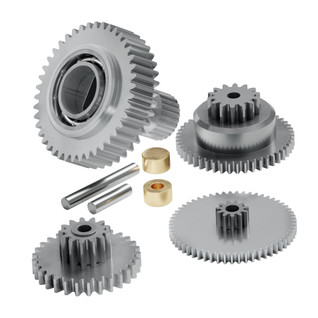Proton Servo (Steel Gears, 180° Rotation, Speed Ratio)
SKU:The goBILDA® Proton Servo is a standard size servo offering essential servo function on a budget. There are two versions of the Proton: ‘Torque’ and ‘Speed’. Though their gear ratios differ, they are identical in every other way. The ‘Speed’ version sacrifices torque to optimize its performance in higher speed applications.
While makers of all levels can appreciate the steel gears that form the Proton’s core, the nucleus of the design is beginner-friendly accessibility! That’s why the Proton’s set of features has been pared-down to the bare essentials:
- 180° of rotation to turn your ideas into reality
- 0.08 sec/60° (125RPM)—blazing speed for projects that just can’t wait
- an H25T spline, which you can use to mount all kinds of rotating components found throughout the goBILDA® ecosystem and the wider hobby market
Looking to make your start in robotics, or provide one for someone else? The Proton can be a fantastic first step for implementing servo solutions in novice projects without straining your wallet!
How Far Will This Servo Rotate?
The answer to this question is partially dependent on what you are using to control the servo.
Click for a quick video explanation.
With an Average Radio System:
94.5°
Your average transmitter and receiver will output a relatively narrow PWM signal range.
Radio System + Travel Tuner:
189°
Adding a Servo Travel Tuner to your radio system setup will allow you to achieve wide PWM signal ranges.
Wide Signal Controllers:
189°
Controllers such as the Servo Commander, Arduinos, and Raspberry Pi servo hats can usually send a wide signal.
Downloads
Specs
| Weight | 52g |
|---|---|
| Output Shaft Style | H25T Spline |
| Voltage Range | 4.8V - 6.0V |
| No-Load Speed (4.8V) | 0.10 sec/60° (100RPM) |
| No-Load Speed (6.0V) | 0.08 sec/60° (125RPM) |
| Stall Torque (4.8V) | 30 oz-in (2.16 kg.cm) |
| Stall Torque (6.0V) | 40 oz-in (2.88 kg.cm) |
| No-Load Current (4.8V) | 80mA |
| No-Load Current (6.0V) | 90mA |
| Stall Current (4.8V) | 800mA |
| Stall Current (6.0V) | 1,000mA |
| Max PWM Range | 600-2400μsec |
| Pulse Amplitude | 3-5V |
| Deadband Width | 5µsec |
| Motor Type | Brushed DC |
| Feedback Style | 5KΩ Potentiometer |
| Output Shaft Support | Dual Ball Bearing |
| Gear Material | Steel |
| Wire Length | 11.81" (300mm) |
| Wire Gauge | 24AWG |
| Connector Type | 3-Pos TJC8 Servo Connector [MH-FC] |
| Servo Size | Standard |
| Direction with Increasing PWM Signal | Clockwise |
| Travel per μsec | 0.105°/μsec |
| Max Rotation | 189° |










































